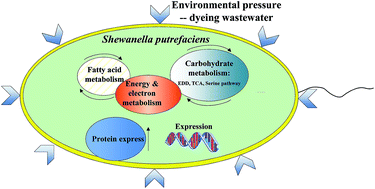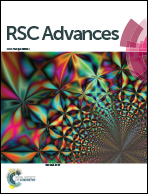Selective colonization mechanism of Shewanella putrefaciens in dyeing wastewater outlets†
Abstract
Large amounts of dyeing wastewater are discharged to rivers and oceans without appropriate treatment, especially in developing countries. It is imperative to control these wastewater discharges to prevent ecological contamination of rivers and oceans. However, most of the mechanisms of bacterial colonization in contaminated rivers and oceans are unknown, especially in dyeing wastewater outlets. We found Shewanella putrefaciens to be the primary bacteria in the dyeing wastewater outlets around Ningbo City, China. Therefore, in this study, we utilized a combination of differential proteomics, metabolomics, and real-time fluorescent quantitative PCR techniques to investigate the selective colonization mechanism of S. putrefaciens and to excavate related functional proteins and metabolites to provide a theoretical basis for the biological treatment of dyeing wastewater. We found 26 different proteins were filtrated by 2-DE, referring to the synthesis of fatty acids and amino acids, sulfur metabolism, RNA degradation, energy metabolism, two-component signal transduction, oxidative stress, siderophore transport, ABC transport, etc. Furthermore, 14 candidate genes in mRNA expression levels were researched by qRT-PCR, and the results showed that 9 genes were up-regulated, 3 genes were down-regulated, and 8 genes presented consistency in protein and gene expression levels. Additionally, 57 different metabolites of 8 classes were detected. Most metabolites were up-regulated with the highest up-regulated ratios being thymine (61.13), then ethanol (28.61) and putrescine (20.74). Arginine, AMP and malate were down-regulated though. These metabolites are involved in twin-arginine transduction systems and two-component signal transduction systems, which may be related to the adaptability of S. putrefaciens to dyeing wastewater. This work can help researchers understand the biological mechanism pathway of S. putrefaciens in dyeing wastewater. In our future research, we will look to apply this strain for dyeing wastewater treatment.


 Please wait while we load your content...
Please wait while we load your content...